Analyzing datasets in Excel often requires counting the number of cells that meet certain conditions. The COUNTIF function is a powerful tool in Excel that allows you to count cells based on a specific criterion. Whether you're dealing with numbers, text, or dates, COUNTIF simplifies the process of tallying cells that fit your specified condition.
While COUNTIF is designed for counting cells that meet a single criterion within a range, its counterpart, COUNTIFS, extends this capability to multiple criteria across one or more ranges. Mastering these functions can greatly enhance your data manipulation and analysis skills in Excel.
This comprehensive guide will walk you through the usage of COUNTIF and COUNTIFS functions, providing detailed examples and explanations to help you effectively apply them to your data.
Excel COUNTIF function
The COUNTIF function counts the number of cells within a range that satisfy a given condition. This condition can incorporate logical operators like <, >, <>, =, >=, and <=, as well as wildcard characters such as * and ? for broader matching options.
Syntax of the COUNTIF function
The syntax for the COUNTIF function is straightforward:
=COUNTIF(range, criteria)Parameters:
range– The set of cells you want to count.criteria– The condition that determines which cells to count within the range. It can be a number, text, cell reference, or an expression.
Counting numeric values with COUNTIF
When dealing with numerical data, you can use the COUNTIF function to count cells that meet specific numerical conditions. This includes counting cells equal to, greater than, less than, or not equal to a certain value.
For instance, to count how many cells in the range B2:B11 are equal to the value in cell D2 (which we'll assume is 5), you can use the following formula:
=COUNTIF(B2:B11, D2)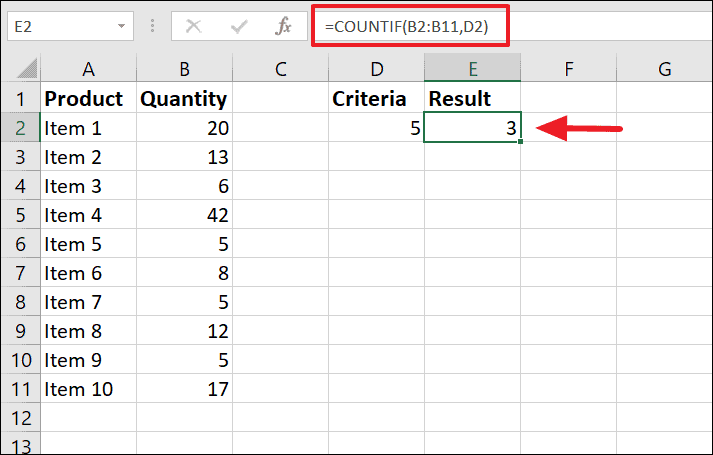
If you want to count cells with values less than 5 in the same range, you can modify the formula as follows:
=COUNTIF(B2:B11, "<5")In this case, the less than operator < is combined with the number 5, enclosed in double quotes to form the criteria. This tells Excel to count all cells in B2:B11 that have a value less than 5.
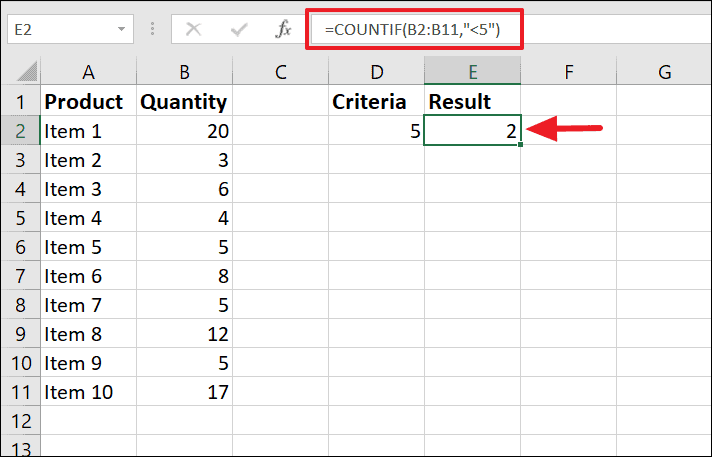
When you need to reference a cell in your criteria along with a comparison operator, you can concatenate the operator and cell reference using an ampersand (&). For example, to count cells with values greater than or equal to the number in cell D2, use:
=COUNTIF(B2:B11, ">="&D2)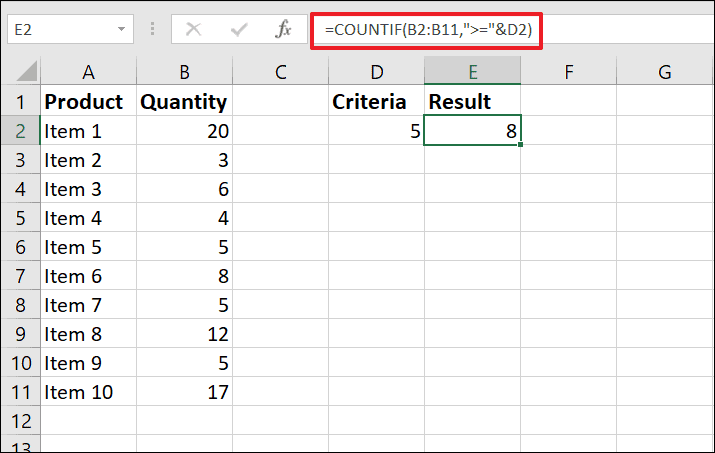
Below are some examples of formulas and their results:
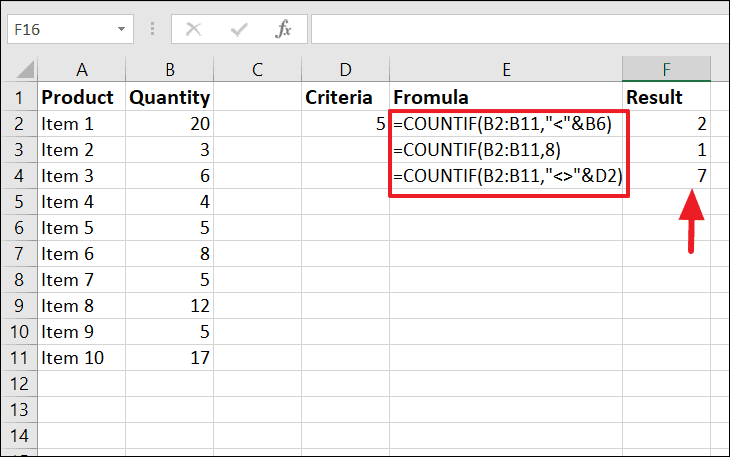
Counting text values with COUNTIF
The COUNTIF function is also effective for counting cells that contain specific text strings. To accomplish this, you can use the text itself as the criterion or reference a cell that contains the text.
For example, if you have a range B21:D27 and you want to count how many times the text in cell B21 (e.g., "sam") appears, you can use:
=COUNTIF(B21:D27, B21)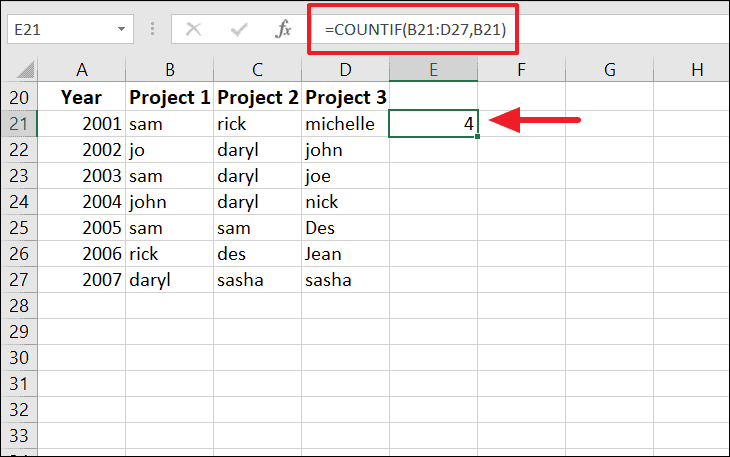
You can also input the text directly into the formula, ensuring that it is enclosed in double quotes:
=COUNTIF(B21:D27, "sam")
To count cells that do not contain a specific text, use the not equal to operator <> in your criteria:
=COUNTIF(B21:D27, "<>"&B21)This formula counts all cells in the range that do not contain the text in cell B21. If you're inputting the text directly, the formula becomes:
=COUNTIF(B21:D27, "<>sam")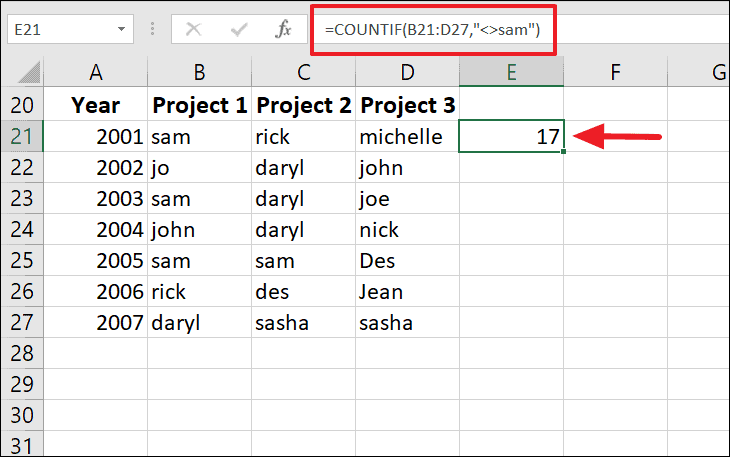
Using wildcards in COUNTIF for partial matches
Wildcards are valuable when you need to count cells that contain partial text matches. The * (asterisk) represents any number of characters, while the ? (question mark) represents a single character. The tilde (~) is used to search for actual asterisk or question mark characters in the text.
Counting cells that start or end with specific characters
To count cells that begin with a certain letter or sequence of letters, use the * wildcard after your specified text:
=COUNTIF(A1:A10, "A*")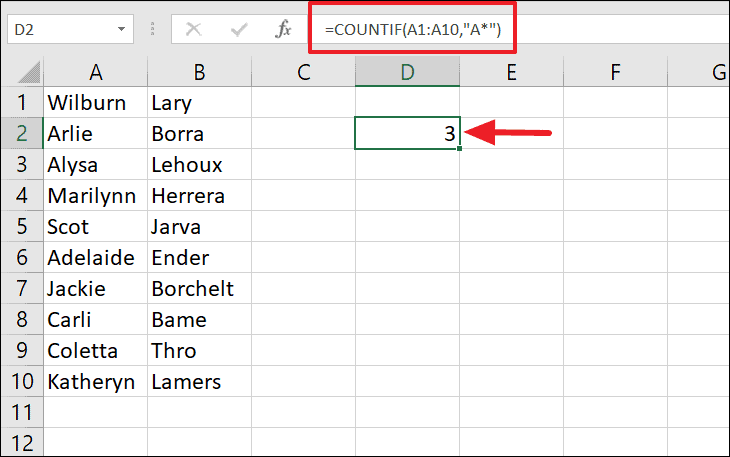
To count cells that end with specific letters, place the * wildcard before the text:
=COUNTIF(A19:A28, "*er")
If you want to count cells that contain certain text anywhere within the cell, place the * wildcard on both sides of the text:
=COUNTIF(A2:A12, "*QLD*")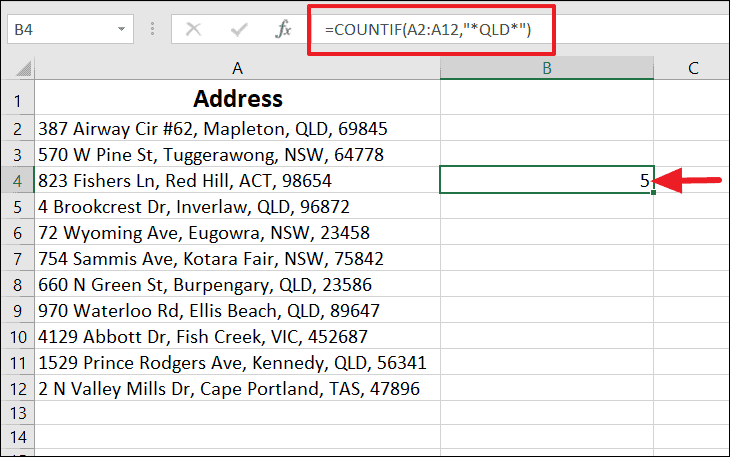
Using the ? wildcard, you can count cells with a specific pattern of characters. For example:
=COUNTIF(A1:A10, "Par?s")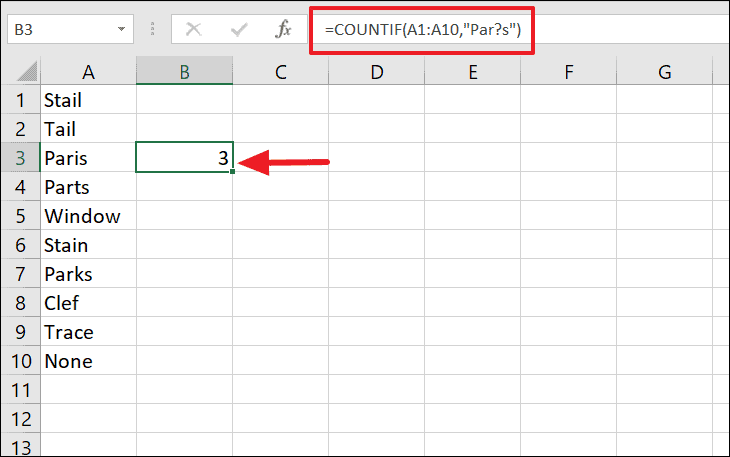
Counting blank and non-blank cells with COUNTIF
Counting non-blank cells
To count cells that contain any text, excluding numbers and dates, you can use:
=COUNTIF(A1:B12, "*")This formula counts all cells that contain text in the specified range.
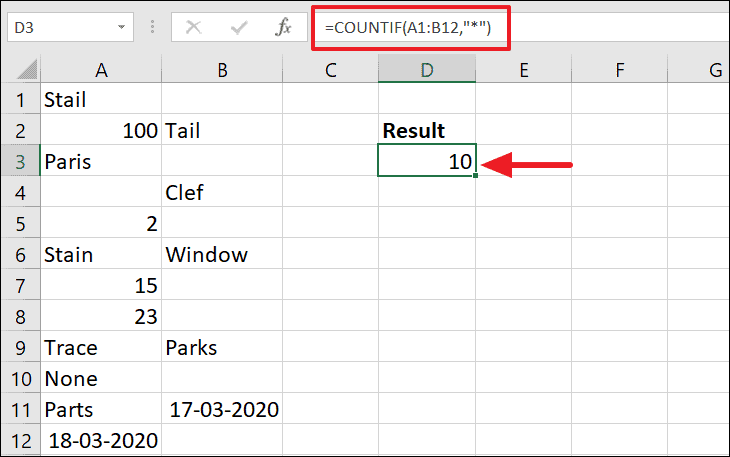
If you want to count all non-empty cells, regardless of the type of content, use:
=COUNTIF(A1:B12, "<>")
Counting blank cells
To count cells that are completely empty, you can use:
=COUNTIF(A1:B12, "")This formula counts all blank cells in the range.
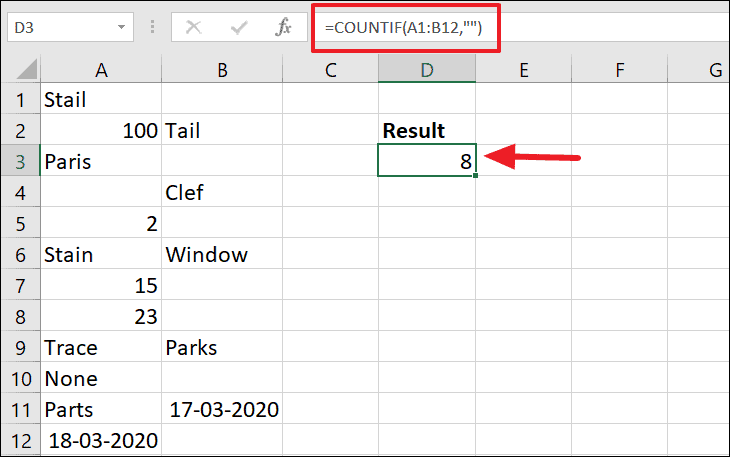
Counting dates with COUNTIF
The COUNTIF function can also be used to count cells containing dates that meet specific conditions.
To count the number of cells with a specific date, such as May 5, 2020, you can use:
=COUNTIF(B2:B10, "05/05/2020")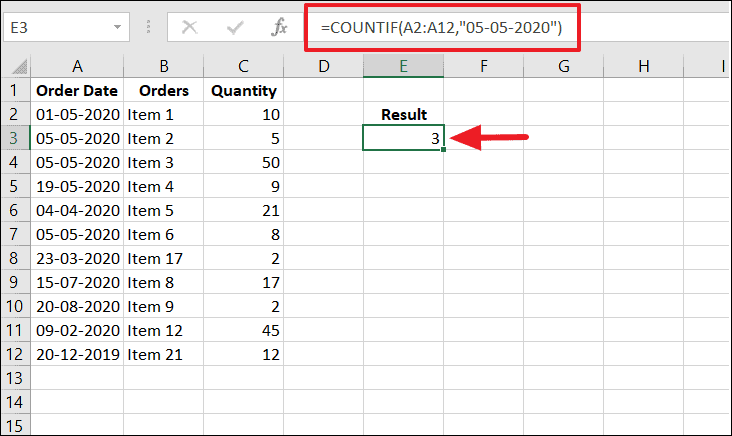
You can count cells with dates greater than or less than a certain date by using the appropriate operator:
=COUNTIF(B2:B10, ">=05/05/2020")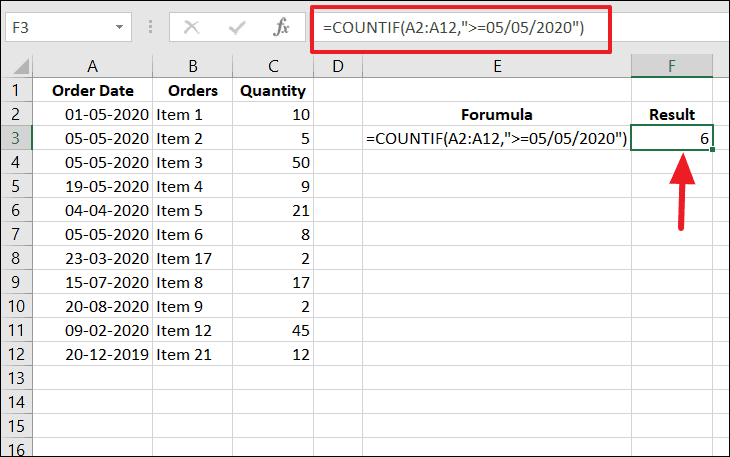
To reference a date in a cell, concatenate the operator with the cell reference:
=COUNTIF(A2:A14, "<"&E3)This formula counts all dates in A2:A14 that are before the date in cell E3.
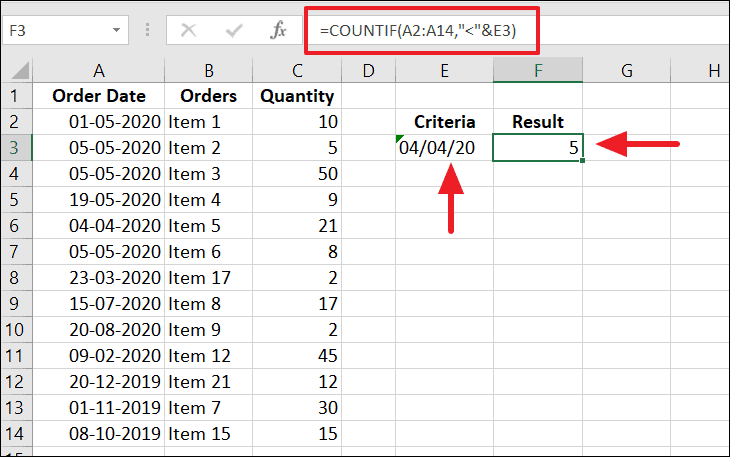
Here are some example formulas and their results:
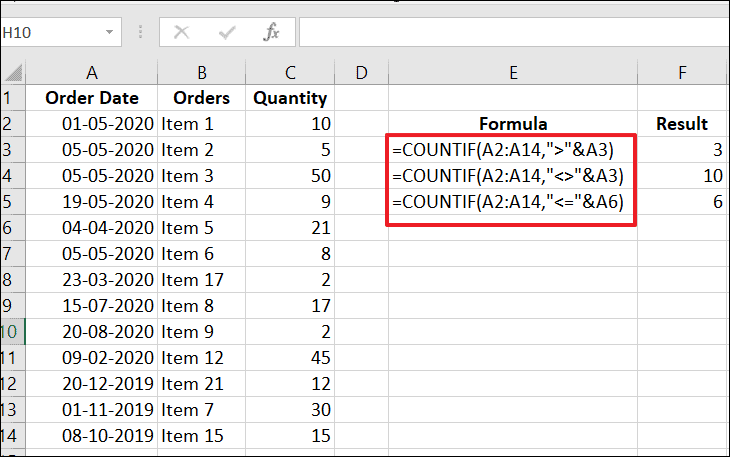
Counting dates based on the current date
You can use the TODAY() function within your criteria to count dates relative to the current date. For example, to count dates after today:
=COUNTIF(A2:A14, ">"&TODAY())This formula counts all dates in the range that are after today's date.
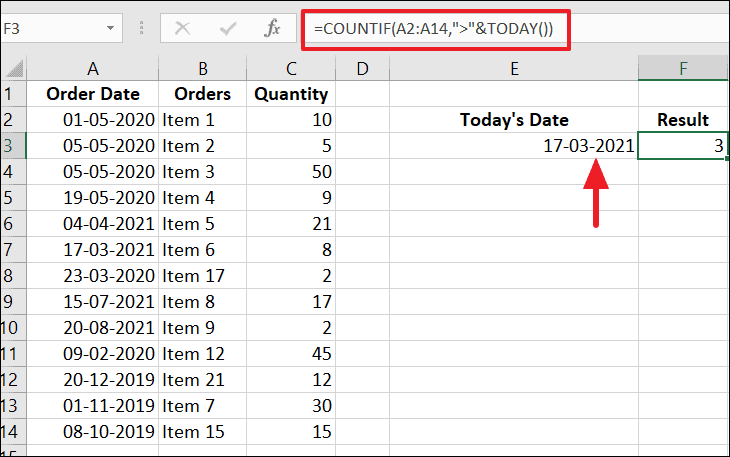
Counting dates within a specific range
To count dates that fall between two specific dates, you can use the COUNTIFS function. For example, to count dates between February 9, 2020, and August 20, 2021, inclusive:
=COUNTIFS(A2:A14, ">=09/02/2020", A2:A14, "<=20/08/2021")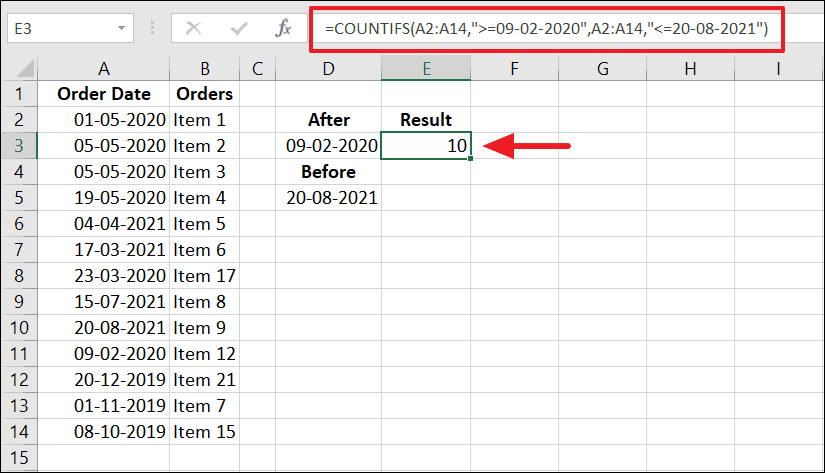
Counting cells with multiple criteria
The COUNTIFS function allows you to count cells that meet multiple criteria across one or more ranges. This function is particularly useful when you need to apply an AND logic to your counting.
Counting numbers within a range
To count numbers between two values, you can use the COUNTIFS function. For example, to count numbers greater than 10 and less than 21 in the range B2:B14:
=COUNTIFS(B2:B14, ">10", B2:B14, "<21")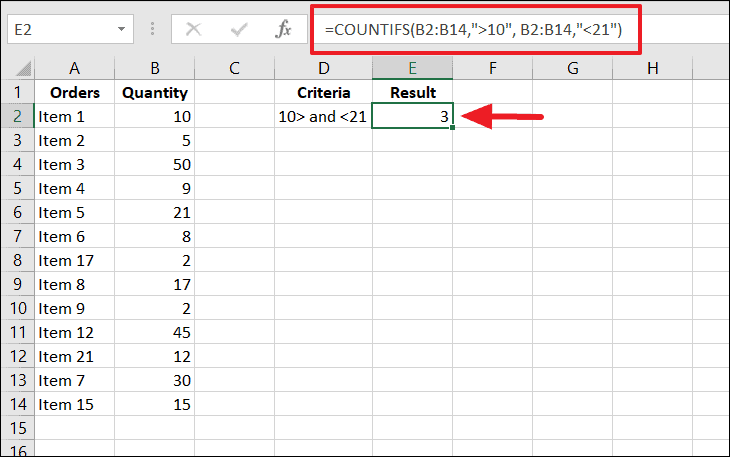
Using COUNTIFS with AND logic
If you need to count cells that meet multiple conditions, such as counting how many times "Bread" has been sold in quantities less than 5, you can use:
=COUNTIFS(A2:A14, "Bread", C2:C14, "<5")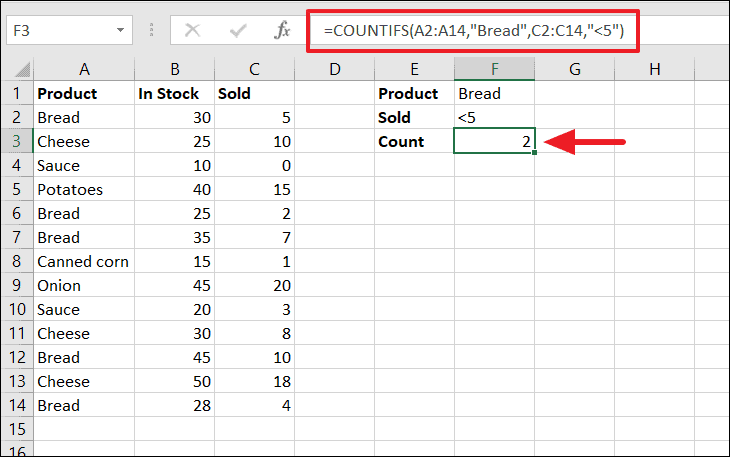
Using COUNTIF with OR logic
When you need to count cells that meet any of multiple criteria, you can combine multiple COUNTIF functions. For example, to count how many times "Bread" or "Cheese" appear in the range A2:A14:
=COUNTIF(A2:A14, "Bread") + COUNTIF(A2:A14, "Cheese")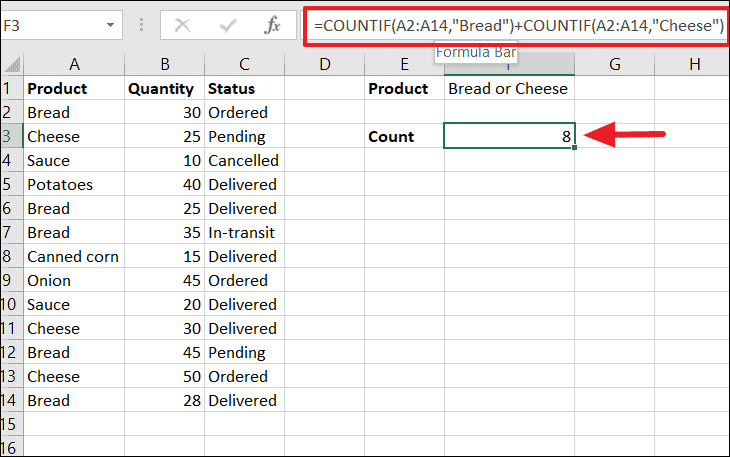
For more complex criteria, you can use multiple COUNTIFS functions. For example, to count how many times "Bread" has a status of "Ordered" or "Delivered":
=COUNTIFS(A2:A14, "Bread", C2:C14, "Ordered") + COUNTIFS(A2:A14, "Bread", C2:C14, "Delivered")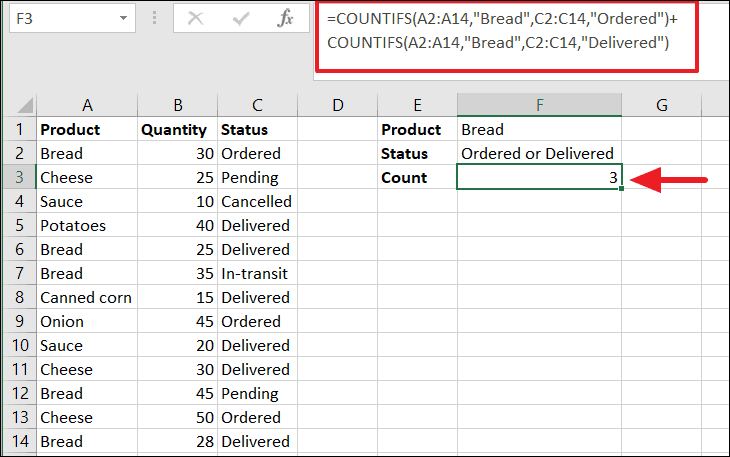
By mastering the COUNTIF and COUNTIFS functions, you can significantly enhance your data analysis capabilities in Excel, allowing for efficient and flexible counting based on a variety of criteria.











Member discussion